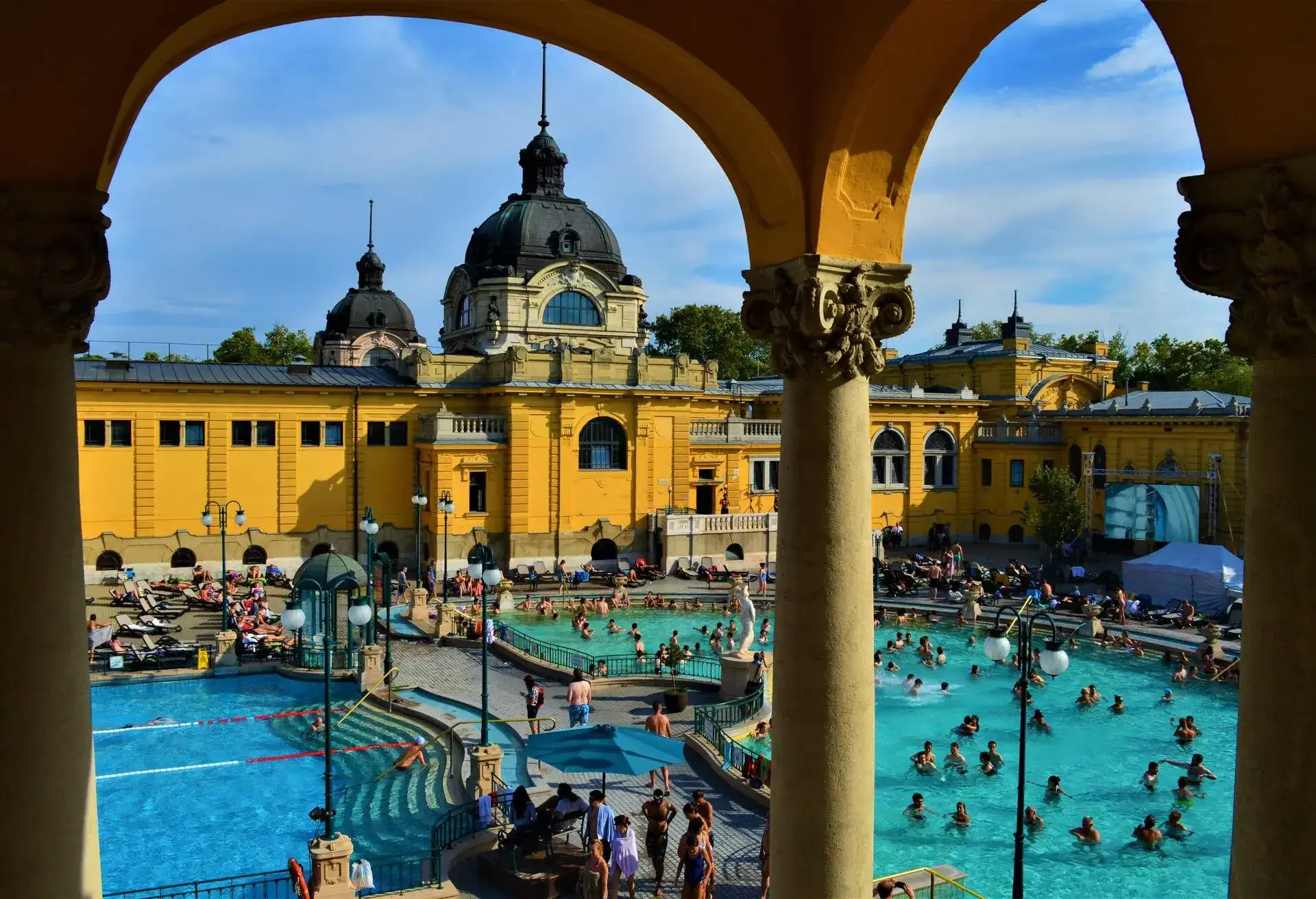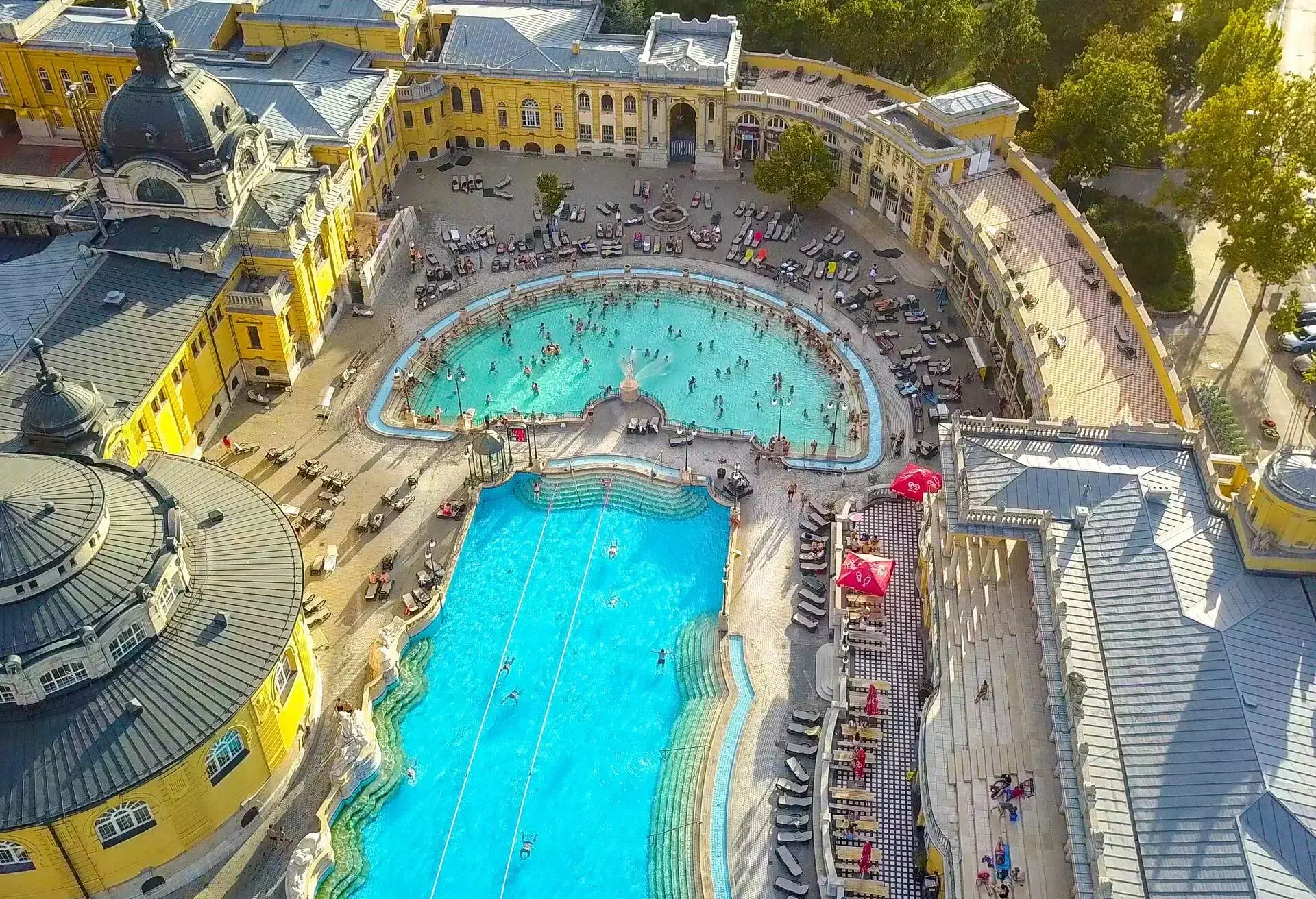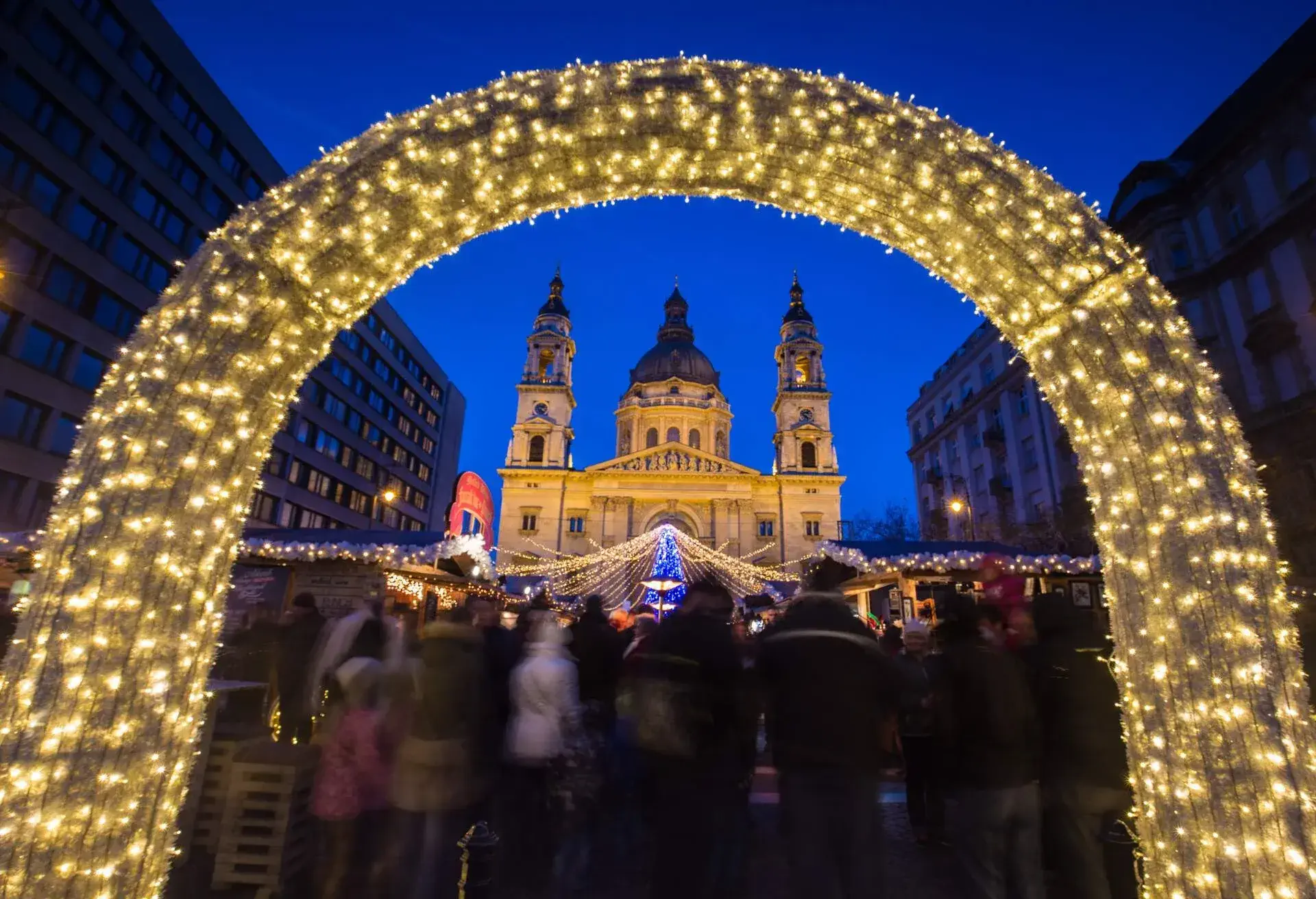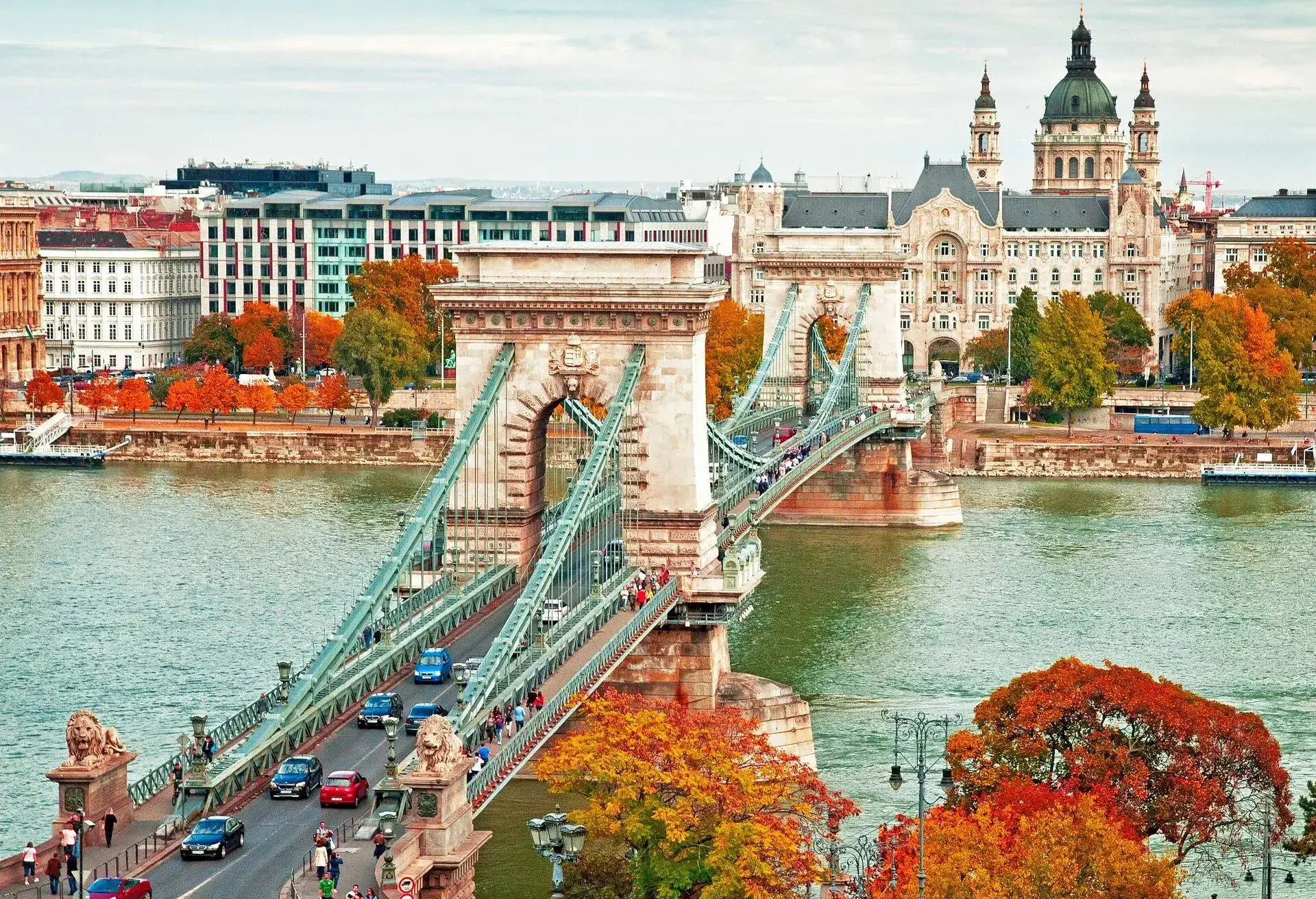Budapest, the capital of Hungary, stood as a hidden gem among travellers until recently, when more and more people discovered the bars hidden amid ruined buildings, the edgy feel of the rundown streets and hearty food, and of course, the enthusiastic locals. One of Europe’s historically significant cities, Budapest will leave you wanting so much more and never leave you lacking. Take your time exploring the unrivalled nightlife, the beautiful districts and the spas and hot springs.
Things to do in Budapest
Jewish Quarter

You’ll want to start your Budapest to-do list off right, with a night out in the Jewish Quarter. The major decline of the Jewish quarter happened during the communist era, when residents fled the country en masse. Much of the original natural fibre of the neighbourhood deteriorated thanks to reckless developers, and the streets remained dilapidated for a long time. A surge in Hungarian culture, particularly among the younger generation, turned dilapidation into revitalisation, with the same streets teeming with ruin bars, shops, cafes and other restaurants.
Despite the young crowd, busy streets and the look and feel of the rundown architecture, the diverse choice of cuisine and entertainment in the Jewish Quarter is starting to give the Michelin-decorated restaurants in Downtown Budapest a run for their money. Several of the hottest restaurants in Budapest can be found in the Jewish Quarter, including Mazel Tov – an updated ruin bar, Getto Gulyas – a restaurant serving delicious Hungarian stews, and DOBRUMBA – a Middle Eastern-style restaurant.
Szechenyi Baths

The breath-taking Szechenyi Baths are one of the most sought-after Budapest attractions and draw in thousands of travellers year-round. Located among the flourishing trees of the city park of Budapest, these historical thermal waters have been a Budapest attraction for more than 100 years. It was built between 1909 and 1913, above healing hot springs that feed 18 separate pools. 15 of the pools are indoors, 3 of them remain outdoors and their healing properties are enhanced by a wide range of wellness features, including saunas and steam rooms, massages and cosmetics.
The thermal waters flow down from Saint Stephen Spring, rich in minerals such as magnesium, calcium, hydrogen carbonate, sulphate, sodium, metaboric acid and fluoride. Many people from all over the world travel to these pools to help heal their inflammatory problems and joint issues.
If you’re lucky enough to visit these pools during the summer, you’re likely to stumble upon a lively pool party, regularly hosted at the Szechenyi Thermal Baths. If you’re hoping for a less crowded feel or a relaxing game of poolside chess, head on down to the pools in the early morning when it’s less crowded with tourists and locals. You can join in on a guided tour between 10:30 and 16:00 every day, to learn a little more about the history and architecture of the baths
Shoes on the Danube Bank
When it comes to Budapest sightseeing, the Shoes on the Danube Bank memorial may not be the most pleasant memory to revisit but they’re an important part of the city’s history. These 60 pairs of cast-iron shoes straddling the river are part of a design dedicated to the 3,500 men, women and children who lost their lives to the Arrow Cross Party.
This poignant memorial was created just a stone’s throw away from the steps of the Budapest Parliament, by Hungarian artists Can Togay and Gyula Pauer. The feelings of shame, terror and heartache that these abandoned shoes, some of which belong to children, evoke gained the artists international acclaim and recognition for their work.
Szimpla Kert

Without a doubt, one of the best things to do in Budapest is visit one of the coolest, most original bars you’ll ever have the pleasure of having a tipple at. There aren’t enough descriptive words to explain the allure of this original ruin bar in the heart of the Jewish Quarter. Szimpla Kert is the place to party when hanging out in Budapest.
Back in the day, Szimpla Kert was the place to escape the hustle and bustle of city life. An eclectic haven where a copious amount of beer was consumed and hidden rooms were lined with vintage furniture, it was somewhere anyone could kick back and just be themself. Nowadays, it’s a far cry from the escape it used to be, but that doesn’t mean it’s lost its charm.
Szimpla Kert is now – probably to the delight of its owners – THE place to be in the Jewish Quarter, where throws of people come to sit in places like a bathtub surrounded by walls of art while having a cheeky drink or sipping on a cocktail. The bar is electric, eclectic, inviting and cheap, which is why it’s remained one of the best bars in the city and a must-see when hanging out in Budapest.
What to do in Budapest: FAQs
How to spend 3 days in Budapest?

To make the most of Budapest in 3 days, you’ll want to utilise public transport. Purchase a 24-hour ticket at a ticket machine for the metro, buses and trams and make use of the hop-on, hop-off bus tours. If you’re looking to be in the centre of all the action, stick with areas like Belvaros or the Castle District, which are all close to the main attractions. If you’re mostly interested in the nightlife, then you need not bother being anywhere but the Jewish Quarter.
Start your first day off with a free walking tour around the Hungarian Parliament, and then make your way to the Shoes on the Danube Bank memorial. After the Shoes, make your way to the thermal spa and have a dip and a massage. Take a Danube River dinner cruise to end your evening with a delicious meal.
On day two, start at St Stephen’s Basilica before meandering through the Central Market. Head to Buda Castle and Chain Bridge from there, before making your way to Szimpla Kert in the Jewish Quarter. On the last day, depending on when you leave, start off perusing the eateries in the Jewish
Quarter before heading to Dohany Street Synagogue. Spend the afternoon at Gellert Cave Church and if you’re not heading home the same day, spend the evening on Gellert Hill, watching the sunset
What is Budapest known for?

Budapest is widely considered one of the most photogenic cities in Europe, thanks to the dramatic skyline and incredible architecture. Ruin bars are one of the top things to do in Budapest and also one of the things the city is most well known for. Aside from these, Budapest is well known for its thermal pools, underground caves, the Danube River, the heart-wrenching events of World War II and its beautiful Parliament Building.
What are the dos and don’ts in Budapest?

- Make sure you eat well. Hungarian cuisine is far more than just goulash soup, and you’d be remiss if you left the city without tantalising your taste buds with the cuisine the city has to offer.
- Walk as much and as far as you can, and use public transport. It’s much cheaper than taking a taxi everywhere, and you get the opportunity to appreciate the landscape, especially on foot.
- Avoid hailing a cab on the street; rather use a reliable taxi service.
- Stay vigilant when in crowded places. Despite it being a safe city, a mass of people does tend to attract pickpockets.
- Don’t expect all the locals to be able to speak your language. Many of the older generations only speak Hungarian, Russian or German.
- Avoid money exchange offices, and don’t exchange money at the airport if you can help it.
What things can I do in Budapest in December?

Travellers and locals alike spend their evenings twirling around alongside the Christmas lights. Take the time to hop on a river cruise down the Danube River, which stretches from Germany to the Black Sea, through the heart of Europe. It’s one of the best ways to see the landmarks like the Parliament Building, Liberty Statue, the Buda House and Margaret Island.
Budapest is known as the “City of Spas” and rightly so. These thermal baths are a must-visit throughout the year, come rain, snow or shine. They’re always warm and they’re always inviting. Lastly, don’t miss out on the Budapest Christmas light tram, which runs across the city every evening from 17:00 throughout December and into the beginning of January.







